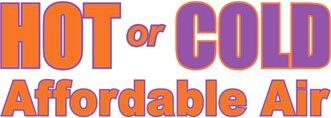When faced with a malfunctioning heat pump, property owners—from residential to commercial sectors—often find themselves at a crossroads between opting for a repair or a complete replacement. This decision is crucial not just from a cost perspective but also for ensuring consistent, efficient, and reliable climate control. As the seasons change, the efficiency of your heat pump directly influences the comfort and energy costs of your property. Understanding when to repair your unit or invest in a new one can lead to significant long-term savings and enhanced system performance.
Our professionals are well-versed in handling a broad spectrum of heat pump issues that commonly affect different types of properties, including light commercial buildings, multi-family units, and rural estates. With a focus on offering durable, effective, and economically sensible solutions, we delve into the problems that might prompt a quick fix against those necessitating a comprehensive replacement. By examining the overall health of your system, we can guide you through a thoughtful analysis of whether to repair or update your unit, ensuring you make the most informed and beneficial decision for your property.
Identifying Common Heat Pump Issues and Their Solutions
Heat pumps are typically reliable systems, but they do face common issues that can affect their efficiency and performance. One typical problem we frequently encounter is airflow obstruction, which can significantly reduce a system’s efficiency. To counteract this, we recommend regular checks and cleaning of air filters to ensure optimal airflow. Another common issue is a malfunctioning thermostat, which can disrupt the heat pump’s ability to maintain desired temperature levels. This often requires recalibration or replacement by our professionals.
Moreover, ice buildup on the heat pump during colder months can also pose a problem. This issue usually stems from poor defrost cycles and can be mitigated by ensuring the system is serviced before the onset of winter to maintain its functionality throughout colder periods. By addressing these common issues proactively, we help avoid larger complications, extending the lifespan and efficiency of the heat pump systems we service.
Evaluating the Cost Benefits of Repairing Your Heat Pump
Evaluating whether to repair or replace a heat pump can critically impact operational costs and efficiency. Initially, the repair costs may seem minimal compared to the cost of a new system; however, recurrent repairs can quickly become a financial burden. We assist our clients by providing a detailed breakdown of repair costs versus the potential energy savings and enhanced performance of a new system. For example, if a heat pump is beyond its mid-life (typically 10-15 years) and is facing frequent issues, the cost of repairs can accumulate to the point where replacement is economically beneficial.
Furthermore, newer models are generally more energy-efficient due to advancements in technology, which means investing in a new heat pump system could significantly reduce energy bills and improve heating and cooling effectiveness. We ensure our clients understand these benefits through a thorough cost-benefit analysis, helping them make informed financial decisions about their heat pump solutions. By carefully weighing both immediate and long-term expenses associated with either repairing an existing system or committing to a new installation, property owners can optimize the operation and cost-efficiency of their heating and cooling requirements.
When to Consider Replacing Your Heat Pump: Key Factors
Deciding whether to repair or replace a heat pump can be challenging for any property owner. Knowing when to invest in a new system is key to optimizing both performance and cost-efficiency. Typically, the lifespan of a heat pump is around 10 to 15 years. However, several signs indicate when a replacement might be the more prudent option. For instance, if the current system requires frequent repairs or has trouble maintaining the desired temperature, it may be time to consider a replacement. Energy bills can also tell a lot; unusual increases might suggest the system’s efficiency is declining.
Moreover, technological advancements mean newer models are often significantly more efficient and feature-rich than those installed just a decade ago. Replacing an older model with a new, energy-efficient heat pump can markedly reduce operational costs and enhance a property’s environmental sustainability profile. Before making a decision, we encourage property owners to consult with our professionals, who can provide a detailed assessment of the existing system and offer tailored advice based on specific needs and building requirements.
How to Choose the Right Heat Pump Replacement for Your Property
Choosing the right heat pump for your property involves several considerations to ensure you maximize the benefits of this vital system. Capacity is one of the most critical factors. A heat pump that is too small won’t adequately heat or cool your building, leading to inefficiency and increased wear on the system. Conversely, a unit that is too large can lead to energy wastage and uncomfortable temperature fluctuations.
Additionally, it’s important to consider the type of heat pump that best suits your property’s environment and climate. Air-source heat pumps are popular for their efficiency and lower installation cost, but in areas with extreme temperatures, a geothermal pump, though more expensive initially, might provide better long-term value due to its exceptional efficiency and lower operating costs. Our team of experts is adept at assessing your specific needs based on local climate conditions, property size, and existing ductwork infrastructure, ensuring that you select the most appropriate system for your property.
Conclusion
Investing in a heat pump is a significant decision that affects not only the comfort of occupants but also the operational costs and sustainability of a property. Whether you are looking to service, repair, install, or replace your heat pump, our team at Hot or Cold Air is here to provide expert advice and high-quality service.
We understand the intricacies of heat pump systems and are committed to helping you choose the perfect solution that balances performance, cost-efficiency, and environmental considerations.
To find out more about how we can assist you with your heat pump repair in Heber Springs or to schedule an HVAC service consultation, contact our knowledgeable and friendly professionals at Affordable Air McCallum LLC today. This way, you can ensure that your property remains comfortable, efficient, and sustainable for years to come.







 100% Guarantee. If you aren't happy, we will keep coming back until you are.
100% Guarantee. If you aren't happy, we will keep coming back until you are.




